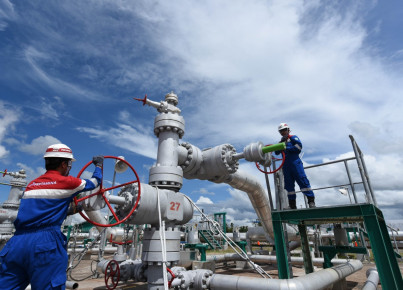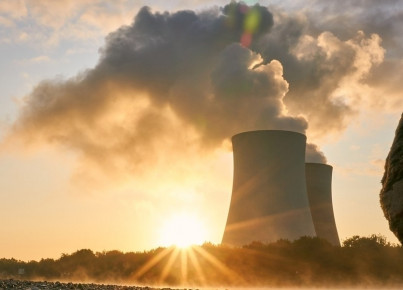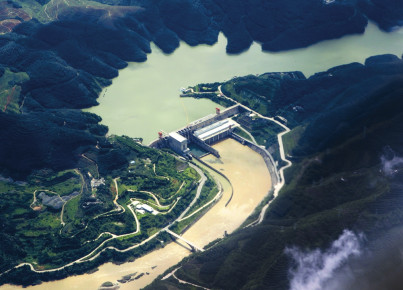The intention for the integration of renewable and more sustainable solutions is there, but it may not be enough: to address the complexity in managing the energy grid of the future, APAC will not be able to do without smart control systems that operate between supply, grid, demand and storage, making the process more efficient, reliable and secure through interconnection.
Article written by Fabrizia Candido
The Asia-Pacific region, also known as APAC, is home to 60 percent of the world's population (about 4.3 billion people) and produces about half of the world's carbon dioxide emissions. In addition to China, India and Japan (three of the six countries most responsible for CO2 emissions), the region is home to some of the fastest growing economies in the world. In fact, by 2040, APAC's fuel energy demand is expected to reach 43.6 petawatts, with global demand reaching 197.8 petawatts. The need to decouple economic growth from GHG emissions is therefore urgent.
Accelerating the transition to widespread, affordable, low-carbon energy supply requires greater optimization of every aspect of the energy system, as well as greater coordination and cooperation among each component. This requires better understanding and improved mechanisms to monitor and control the ways in which power grids, buildings, industrial facilities, transportation networks, and other energy-intensive sectors integrate and interact with each other.
The future power system will accommodate more power from intermittent generators (solar panels produce power only when the sun shines and wind turbines only when the wind blows), and it will be more decentralized: there will be many more physical assets connected to the generation and distribution networks, where energy flows will become increasingly dynamic and multidirectional. The complexity of the power system will increase significantly. This could put the stability and performance of the grid at risk, leading to issues such as frequency imbalances, blackouts, brownouts and capacity overload. Without real-time data, advanced analytics and automation, the most complex power systems of the future will become virtually impossible to manage.
That's where digitization comes in, with data collection and analysis, artificial intelligence and machine learning. The addition of huge amounts of variable energy sources has created the need for smart control systems that operate between supply, grid, demand and storage, making it all more efficient, reliable and sustainable through interconnection.
More specifically, the growing wealth of information generated on energy consumption and production patterns can be used to better plan for the transformation of the industry, both at the macro and micro levels: data monitoring and analysis allows for better predictive ability of renewable energy production, enabling optimization of the entire supply chain. Using data collected from various sources, such as electricity consumption data, electricity price data, and weather data, artificial intelligence can also be used to recognize patterns and/or provide probabilistic predictions about energy production capacity, demand, or shortages.
In short, digitization provides an opportunity to leverage the availability of data to optimize the energy transition.
In 2020, Australia launched its Distributed Energy Resource Register, a registry that provides a database of information about Distributed Energy Resources (DER) devices installed in the national electricity market. The registry collects information critical to the Australian Energy Market Operator's (AEMO) DER program. The interconnection between DER devices and the registry allows AEMO to better manage the electricity grid and ensure reliable, secure and affordable energy for all customers.
Another example of digitization in the service of energy optimization comes from India: the Indian government has developed the India Energy Dashboards (IED), an open source portal that collects data and monthly reports on the country's electricity, oil and natural gas usage. The Indian government also created the Building Energy Efficiency Program Dashboard, with the goal of encouraging the use of energy-efficient devices in residential structures by raising consumer awareness. The online database shows in real time the number of lights installed by region, along with their respective annual cost savings, annual CO2 reductions and avoided peak demand.
Again, since 2013, the Chinese government has also prioritized online energy monitoring systems. Public sector buildings at all levels of government have implemented such systems to obtain real-time data, enabling automation of energy management and a transparent method of assessing the energy efficiency of facilities. Most online energy monitoring systems for China's public sector are currently decentralized systems. For example, the Hangzhou local government, together with Alibaba Group, implemented the City Brain project to improve energy efficiency in transportation. Under the project, a cloud platform captures images from interconnected street cameras, translates them into traffic data, analyzes the results, and provides the most efficient solutions via algorithms, which are then redirected to smart tools such as smart traffic lights. This has reduced traffic congestion in the city of Hangzhou by 10 percent, with implications for pollution levels and fuel use.
Finally, on a larger scale, the Singapore government recently completed a full-scale digital model of the entire city, Virtual Singapore, which includes 3D digital replicas of every building in the city. For urban planners focused on energy efficiency, the digital twin city offers the ability to accurately simulate how new developments and planning changes in the city might affect a range of energy-related indicators, including solar radiation, road and pedestrian traffic flows, heating and cooling, and other factors. Given the city's size limitations, the digital model provides an extremely useful system for testing real-world planning interventions.
In conclusion, the APAC region has come to realize that on the route to the mammoth goal of energy transition, it will not be possible to do without the many and varied smart solutions that digitization and data availability make possible.






